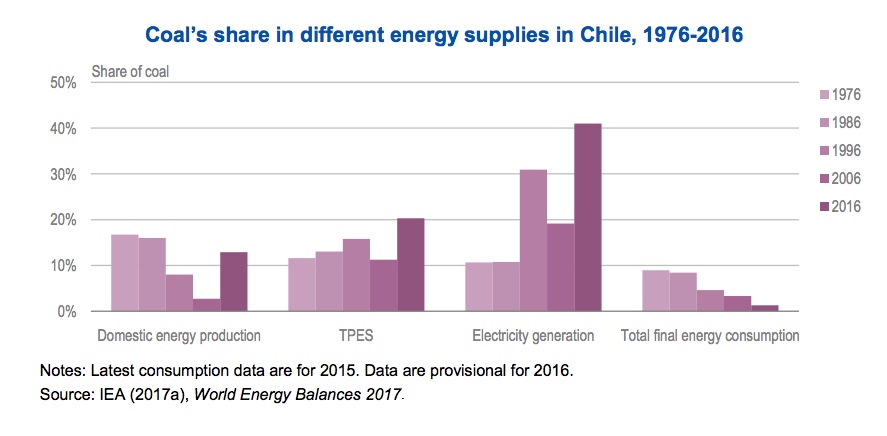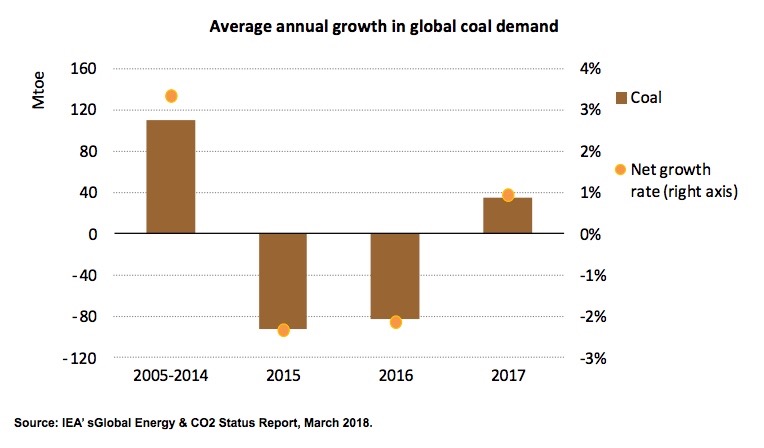Chile's recent coal phase-out decision claims first victims
Chile is pushing power companies to phase out coal plants following a government announcement earlier this year that the country wouldn't build coal-fired power plants unless they were equipped with carbon capture and storage (CCS).
The decision, part of a wider national plan to transition to cleaner energy sources, has already claimed some victims, with French power company Engie SA announcing last week it would close its coal-fired power plants in the country as there was "little point" in trying to sell them. Instead, it plans to replace the capacity with renewable energy.
The agreement, signed by Chile's major utilities, places the country among roughly 20 other nations seeking to curb greenhouse-gas production.


Taken from Energy Policies Beyond IEA Countries - Chile 2018 Review.
Currently, coal makes up 21% of the nation's installed capacity. The share of renewable energies in its evolving power mix is 22%, but the goal is to meet 70% of national electricity needs with solar, wind, hydropower, geothermal, and ocean energy by 2050, the government said in January.
In the last decade, Power Magazine reports, Chile has tripled its generation capacity in from 6.5 GW to 23 GW to meet soaring power demand bolstered by an economy driven by exports:
Yet, the government expects power demand will more than double through 2050. And because it remains an electricity island, with only one cross-border connection, Chile must produce all its own power needs sustainably.
The copper producing country's decision is in line with predictions, such as the World Bank's, which expects coal use to nosedive in the next 30 years.


"The model has been coal plus renewables, the model can be gas plus renewables. I think 10, 12 years from now, we will see renewables and storage and nothing more than that," Riccardo Puliti, the World Bank's global head of energy and extractives, told CNBC.
Yet coal still provides about 40% of the world's electricity, and many countries aren't willing to commit to a total phase-out just yet. A number of developing countries in Asia - including India, Vietnam and Bangladesh - continue to plan new coal plants and so provide to those who don't have it.
What's more, according to data released in March by the International Energy Agency, global coal consumption increased in 2017, after two straight years of decline.